A 3 hour round walk, to and from Yalding High Street. March 2020
At this time, when we are not allowed to leave the house more than once a day unless there’s an emergency, and should only be doing it for the purposes of exercise, my awareness of the connections between nature and our situation is alive in my mind as I walk.
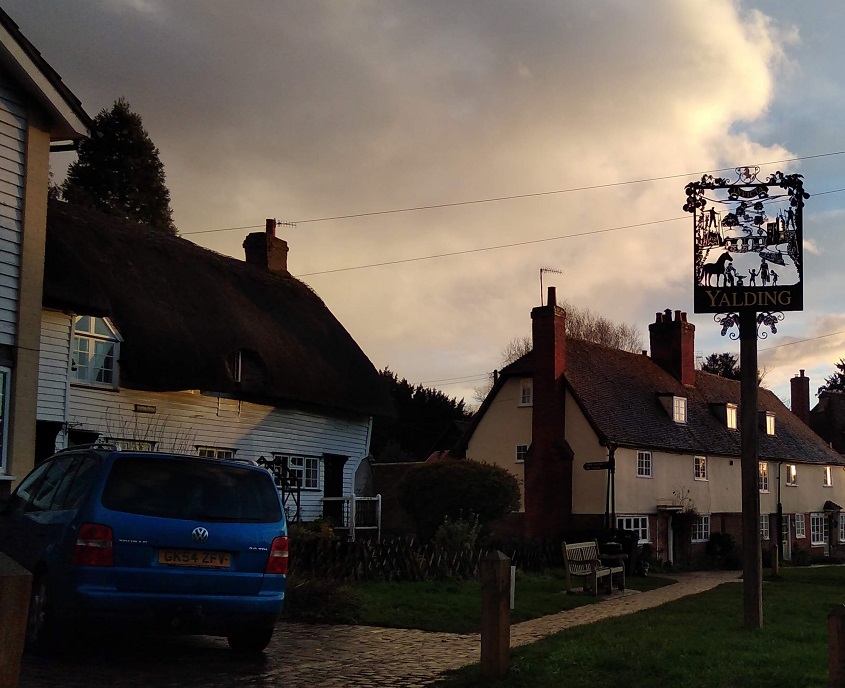
There’s a little lane off Yalding High Street, between the white-boarded, thatched house and the pale daffodil-yellow brick one with matching tiles (on the same side as St Peter’s and St Paul’s church). It takes you past the churchyard and through a gate which is now propped open with a sign saying it’s because of the corona virus. (It took me a while to work out why, but I think it’s so that you don’t have to touch the wood and possibly leave or catch germs). The cemetery with H’s grave and the rifle range are almost facing each other and you can see the controversial new builds and the rubble which has been left over. The Kintons is a well-used sports and dog-walking patch of grass with a children’s play area.
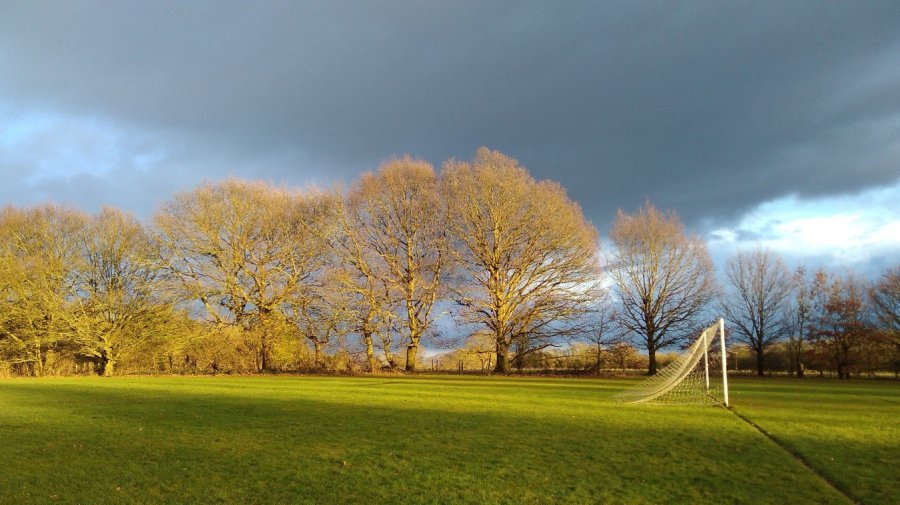
In the far left hand corner, past the bluebell woods, is a track which darts straight ahead. A field was being mowed to the right, a rather portly little dog was scampering behind, and I could see into the scrubby woods, with the back entrance to a grand mansion opposite. A woman was coming towards me and she couldn’t avoid being closer than two metres due to the narrowness of the track, but she awkwardly tilted her upper body as far away as possible. I had a lot of bible teaching when I was a child and stories often pop into my mind. I had been thinking about the image from the Good Samaritan of people crossing over to avoid having to help the injured and needy. Nowadays, on the contrary, we are taking care of each other by doing just that: by-passing on the street. Equally, many of us are going out of our way to look out for others – the phone and the doorbell ring approximately seven times a day at my mother’s house where I am currently staying, with folk from near and far checking if she is okay because she usually lives alone and is over 80 years old.
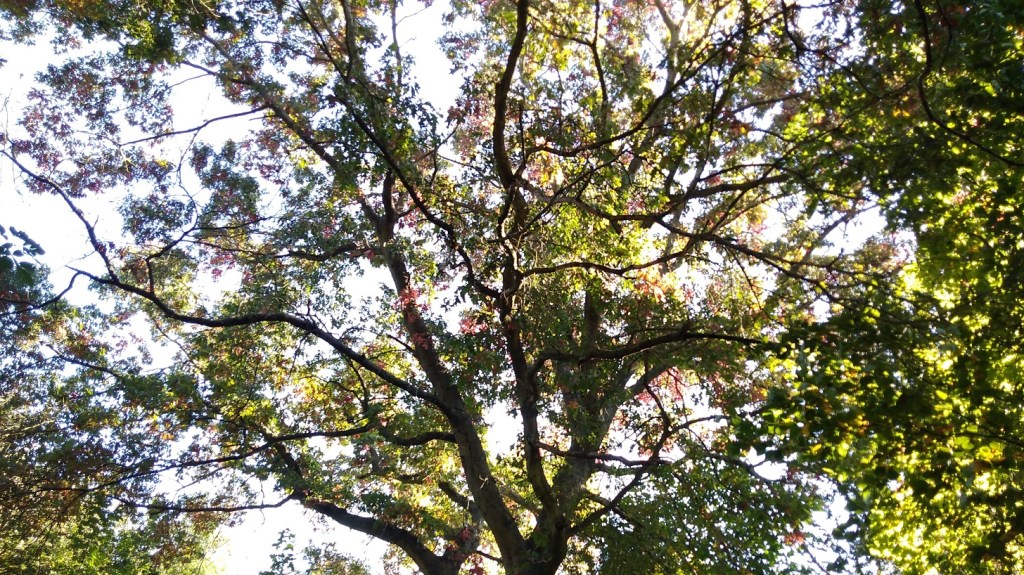
Crossing Vicarage Lane at a slight angle, I clambered over the stile, sleeve pulled down over my supporting hand to avoid skin contact, tromped through the grass, crossed an access road, and followed the footpath signs (you do not have the Right to Roam in England as we do in Scotland).
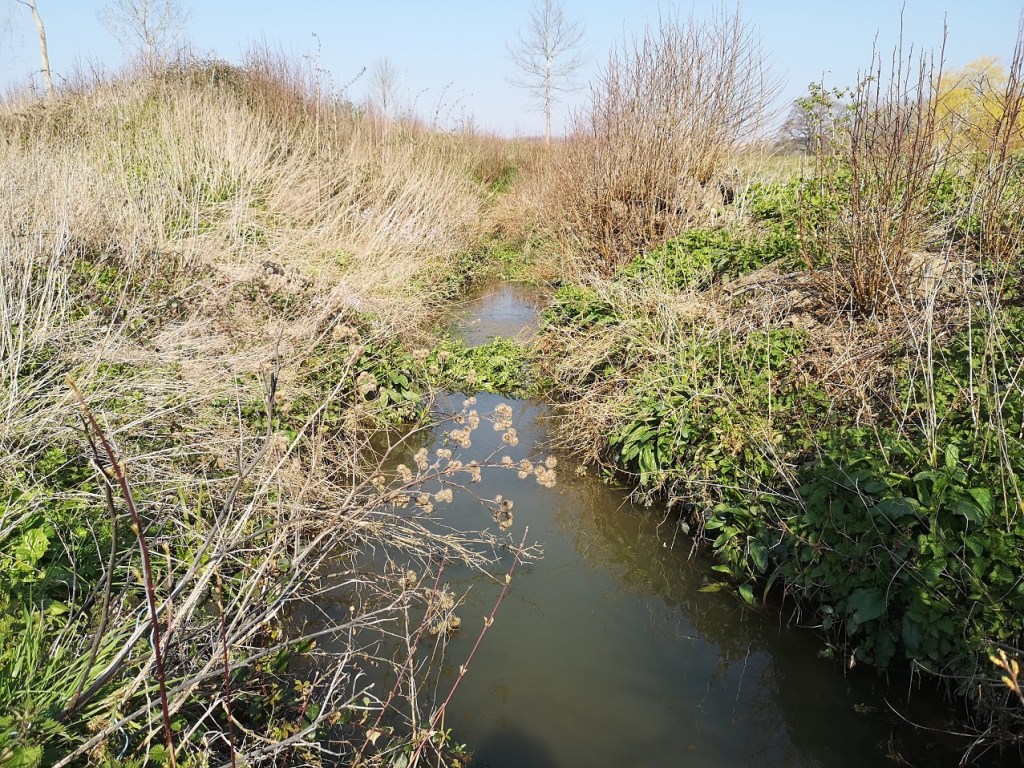
Water weaves through this landscape at the best of times. It floods regularly, inundating the copses and arable lands; contrastingly, it is often so dry that great fissures appear and hose pipes are banned. Locals are constantly reminded of what is vital to life, forced to focus on conserving it and appreciating it when it is in balance. This virus we are now dealing with, is, maybe unwittingly, protecting our landscape (yesterday drones were spying on the Yorkshire moors to even stop hikers (for different reasons)). Although many fear that we have damaged it for good, we do also know how resilient nature can be.
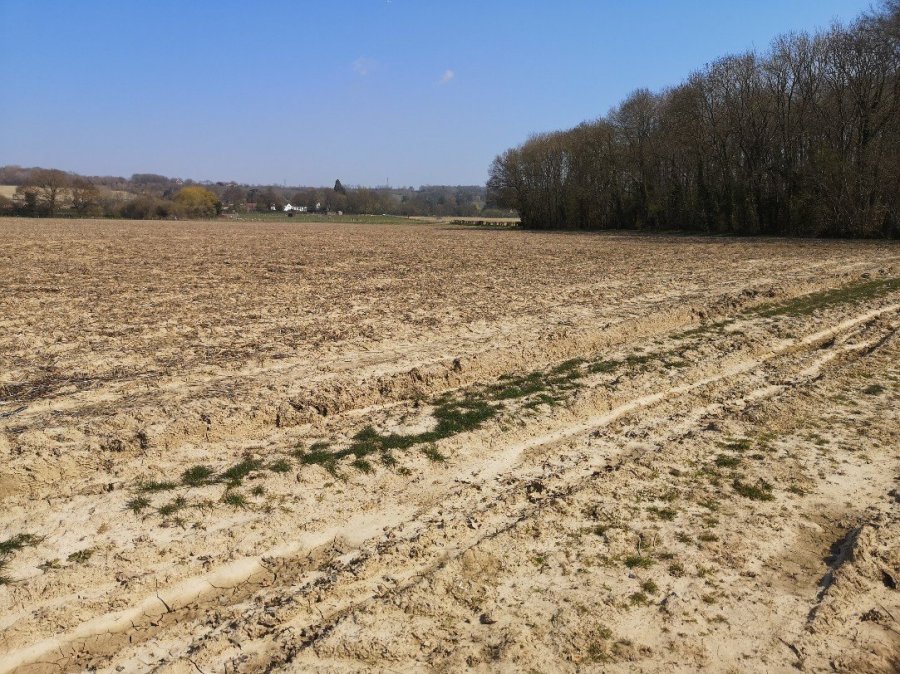
The earth was bright in the sun, hardening and whitening every day now Spring is here. Often so solid and unyielding in the south east of England, there are still sodden patches and the odd sinkhole of wetness left from Winter and you might not be so safe if you stepped there. I reflected that it is change, especially unforseen changes, which challenge our sense of security. Although we want to trust that we will one day be able to plan and move around the world again, we do not know when that will be. In fact, we know deep down that nothing will be exactly the same; we understand that this is serious enough to bring about a new order. We don’t yet know what shape that will take because, metaphorically speaking, the ground underneath us has shifted. This is why walking, even when we have to watch our footing, is such a reassuring activity – we still get from a to b and survive the experience. I could feel myself becoming grounded, and then I sighed and felt a movement in my heart area. (Chinese medicine practitioners: in the Five Phases, when the child’s happy (Earth), so is the mum (Fire)).
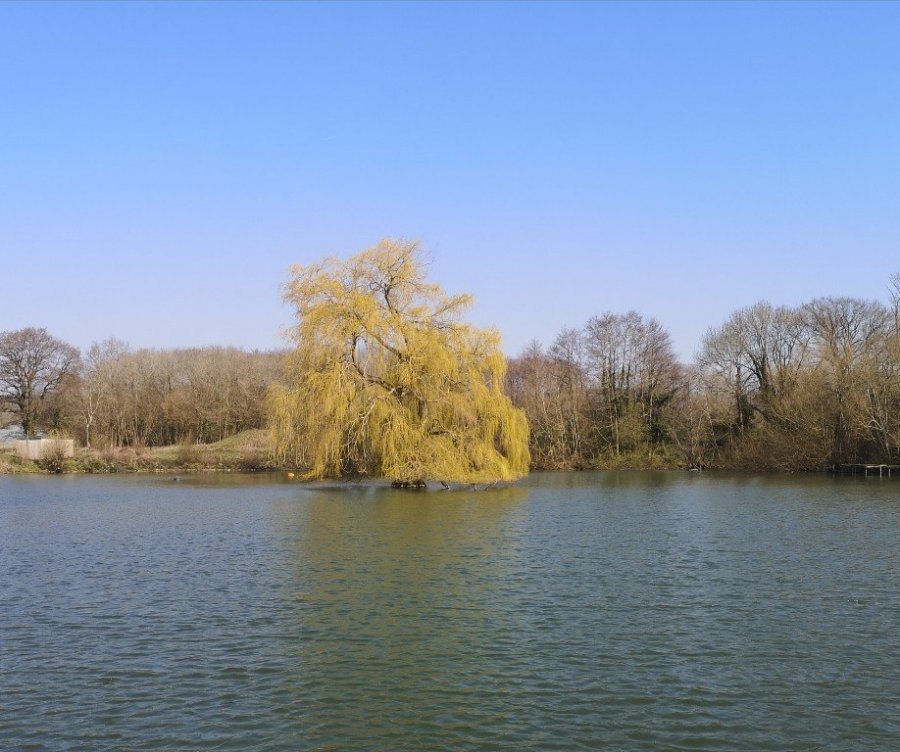
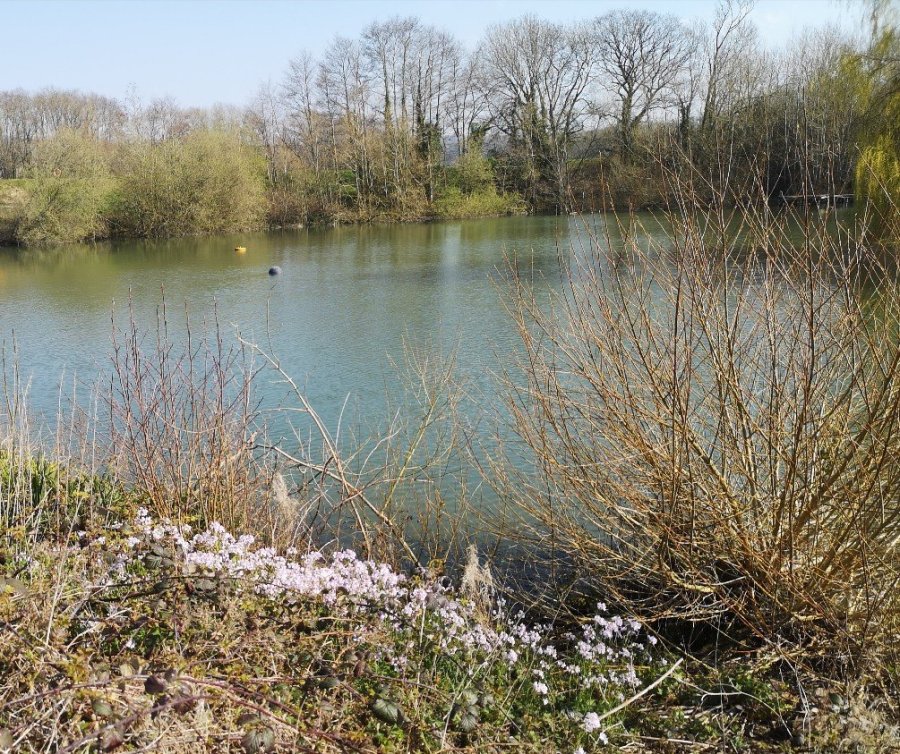
Walking towards Grove Lane, there is an almost imperceptible gap on the left which opens out to a small lake. It looked grand. Skirting it, I admired the wild flowers. What a beautiful setting on such a day, with the cool wind causing mini waves and turning the surface a myriad of shades of blue.
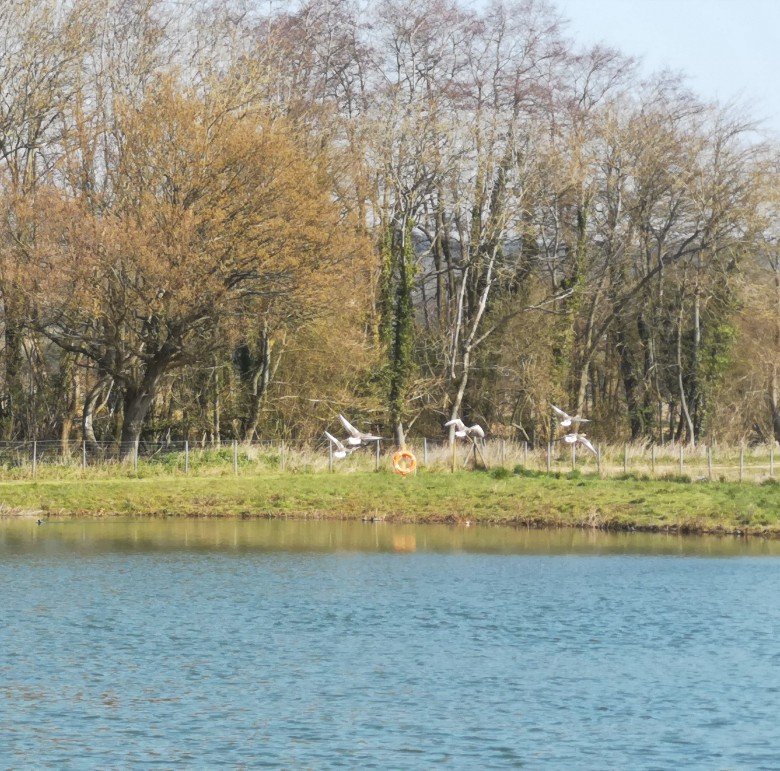


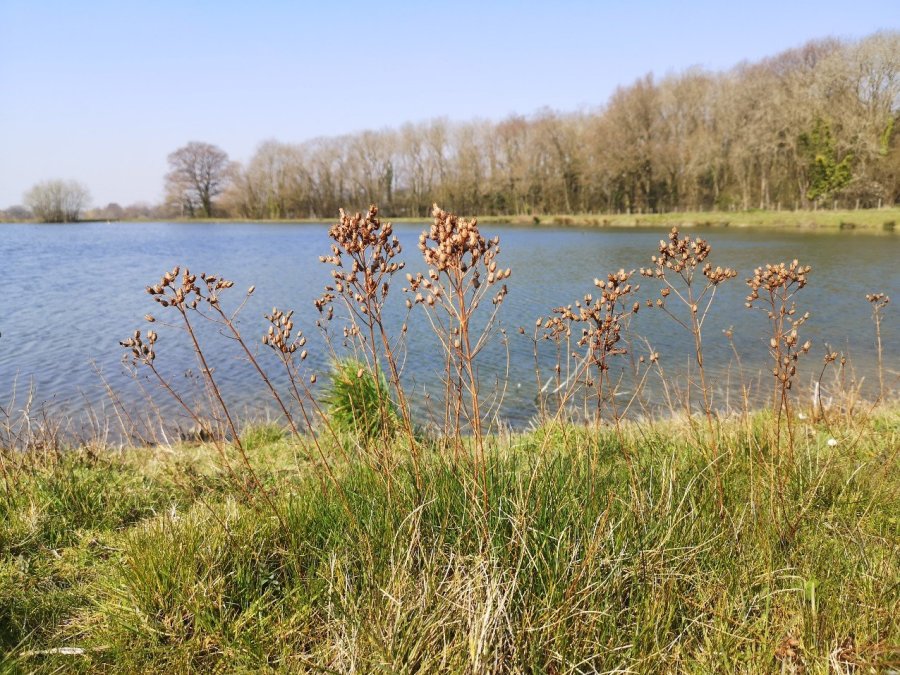


I crouched down to watch a bee collecting from between delicate mauve petals. He was only just about holding his own way in the breeze, but he kept on, goal clear. I admired the water birds and the Daisies with their sunshine faces. Bird’s Eye nestled at their feet, making another stunning combination of hues. There were sharply serrated Nettles and whorls of Thistles. Neon orange lifebelts hung at either end, and the whole was chicken-wire-edged so that I made an entire cycle before exiting precisely where I entered, stepping over the fallen fence.
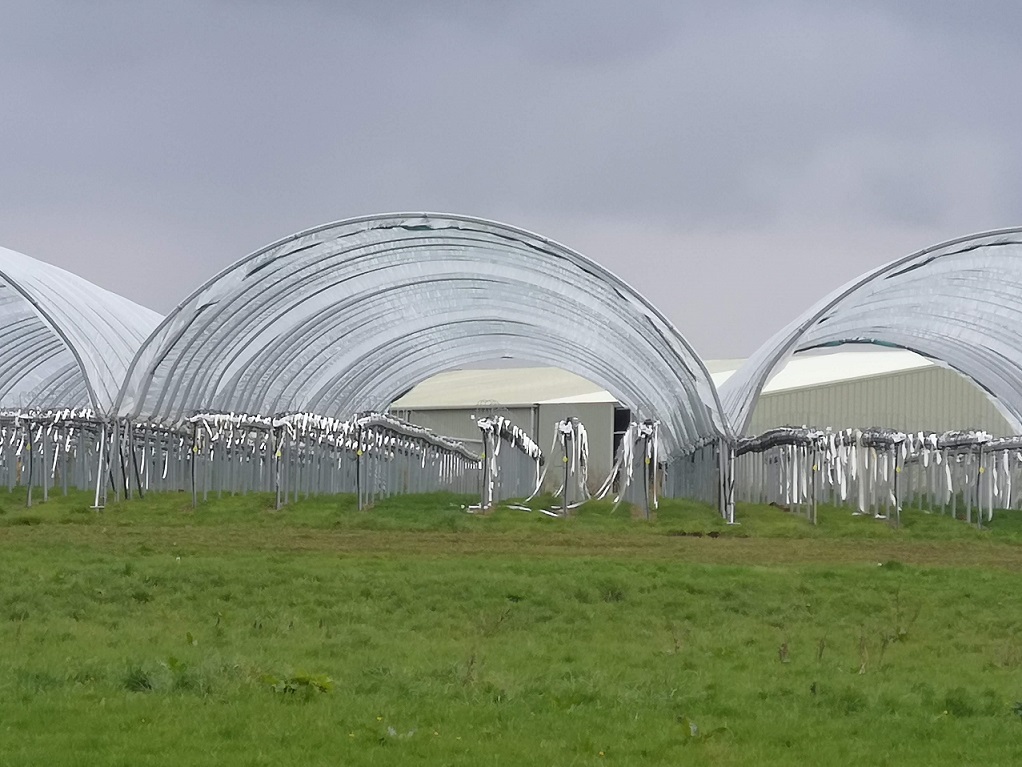
Doubling back on myself by the lane which curves around the lake, my attention was attracted by men’s voices, the first of several groups I passed during the morning, working away hard in close proximity. They were setting the strawberry plants onto the stands under the plastic hoods.
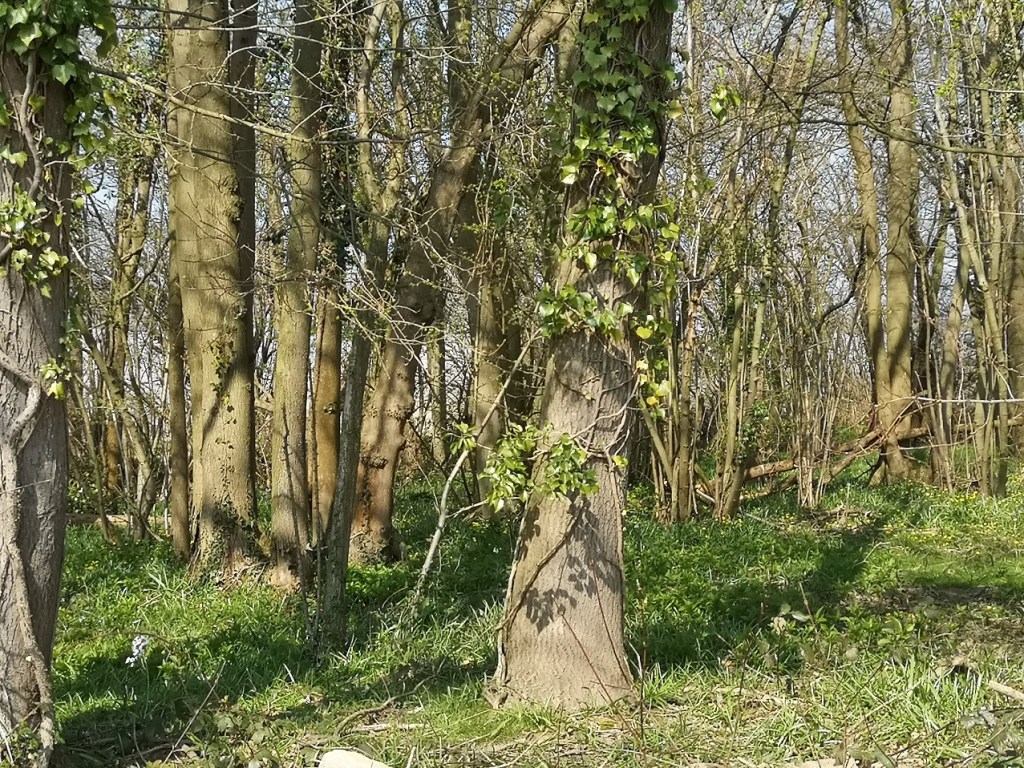

I heard the coots before I saw them and I suspect that they were born here, that their life has been, and will continue to be, spent in this pond, (according to the RSPB they are resident here all year round), just as the trees in the wood next to it have stood in the same place for 100s of years. Other waterfowl return to their homes, well to their second homes every winter like Brits on the Costa Brava.
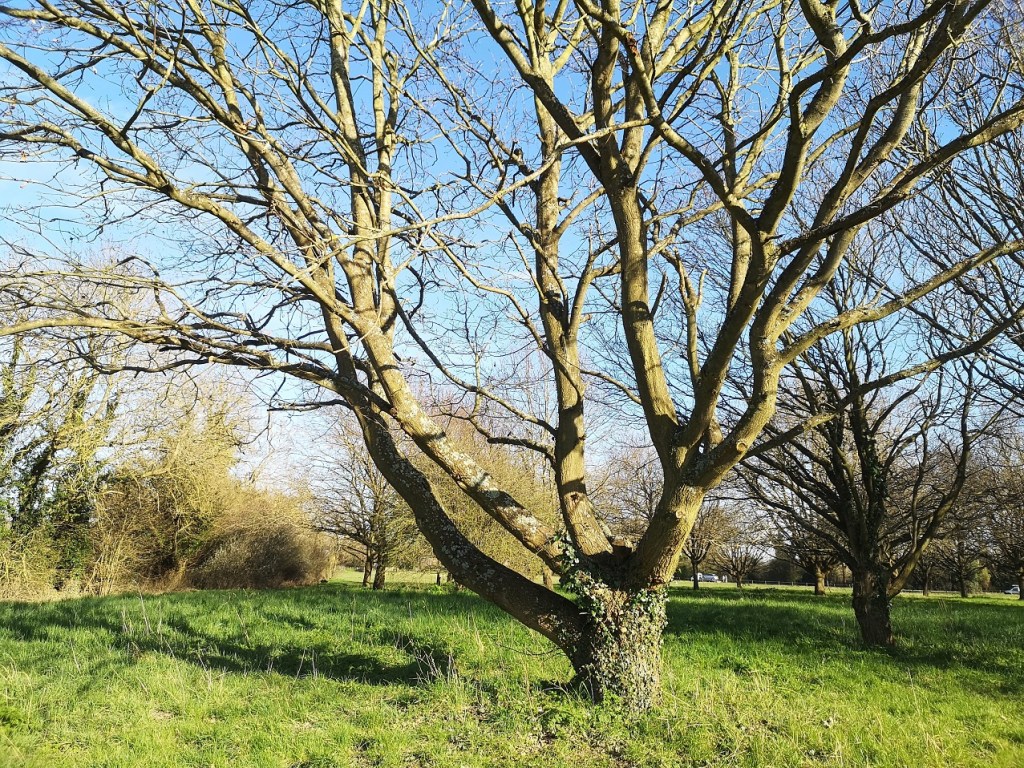
Witness the staying power of trees! There they are, in one spot, come month, come year. And what do they do while they’re standing there? It turns out they are very quietly, and probably slowly, fostering their community through their roots, just as so many of us are only now starting to do.
The word ‘Foster’ is associated with the Old English ‘fostrian‘ meaning to supply food, nourish and support.

At the same time as processing the CO2 (carbon dioxide) for us, looking beautiful and smelling divine, trees offer a home to insects, birds and other creatures. And yet, so many humans were living and suffering alone before this crisis and are now even more isolated. This can be an unnatural, even a dangerous situation for certain people. Questions arise: What can we do to make sure that those who want it can get support and companionship? How can we plan in advance for the next virus? Trees will grow taller and straighter, needing less pruning, if they are planted close to each other in the way that they naturally reseed in a woodland area. What a lot we have to learn! What a lot we are learning right now, thanks to the Covid-19.
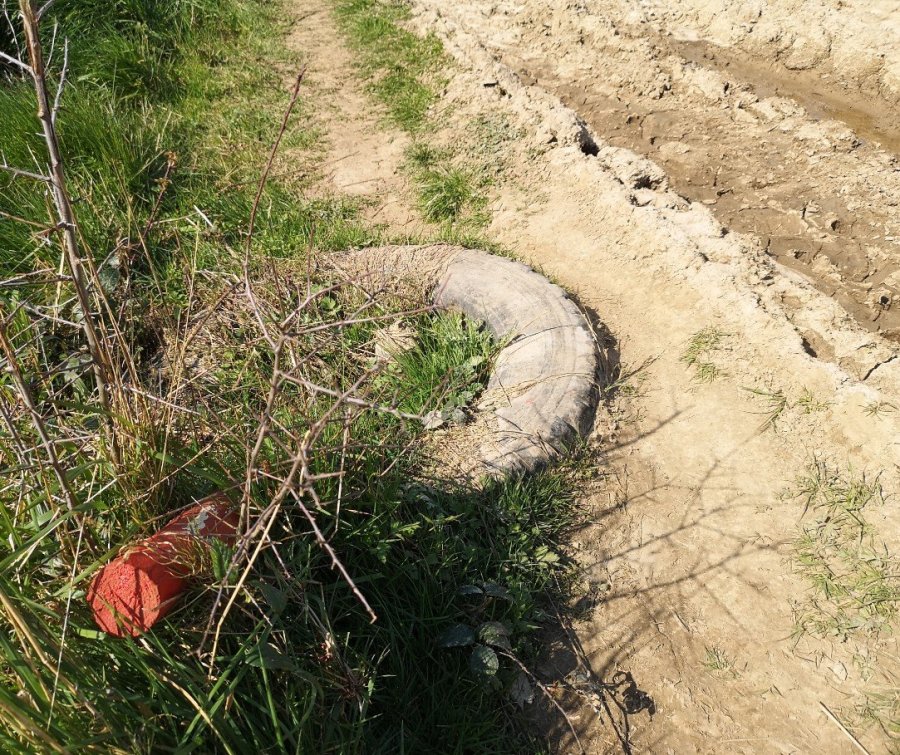
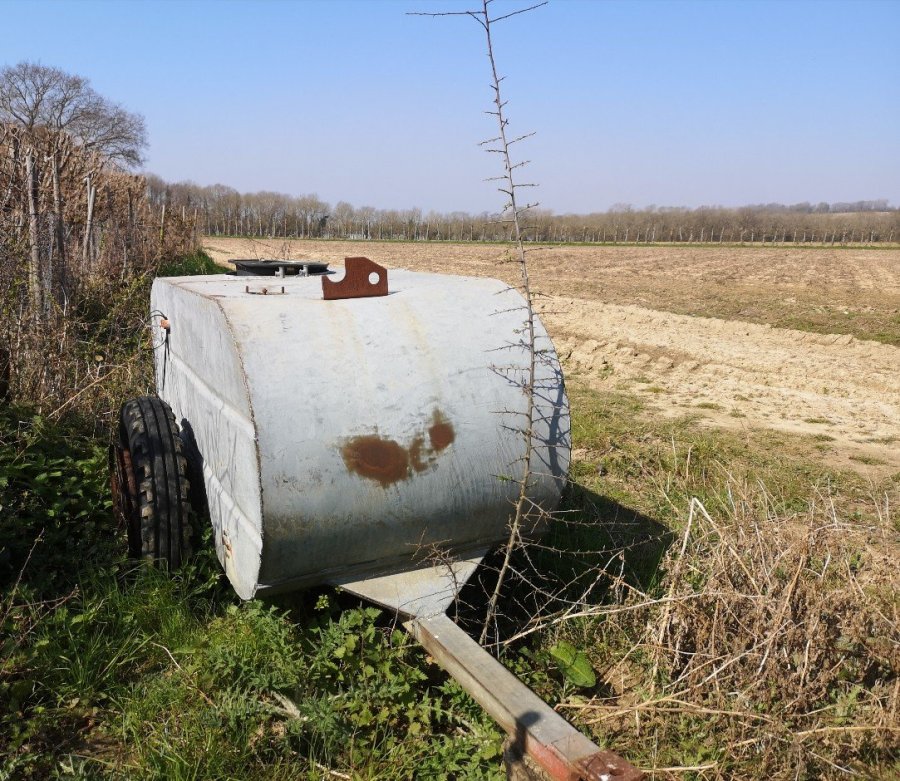
The path took me around a corner where some old equipment was half buried and put out to pasture. Wide open fields were flattish, a gentle rise in the distance and the wind from the north was chilly except when sheltered by the hedgerows.

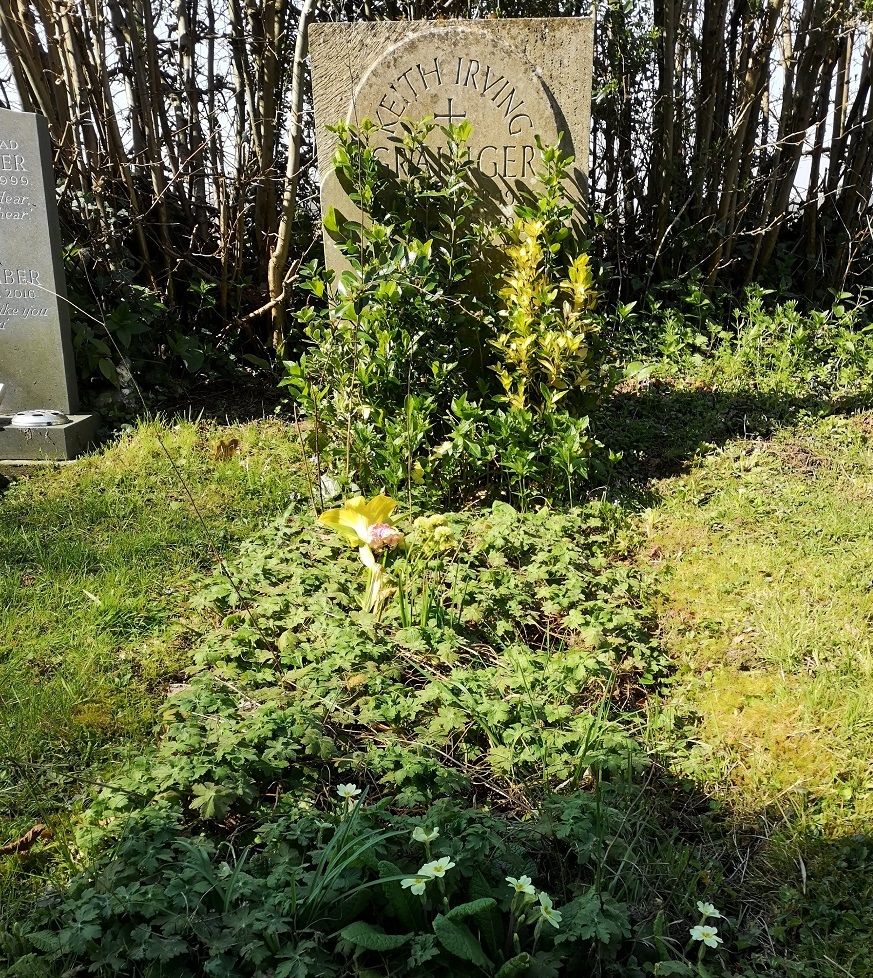
I took the Permissive Path (that is, not a public Right of Way, but one which is permitted by the landowner) over a tiny, planked bridge to West Street and stopped at Hunton St Mary’s church to visit my father’s grave. I took a quick photo of the Village Hall to send to my sister – she got married there – and then crossed back over, past the Engineering Works and went right. I wandered beside more agricultural land until I reached the junction between Barn Hill and the wonderfully named Lughorse Lane.
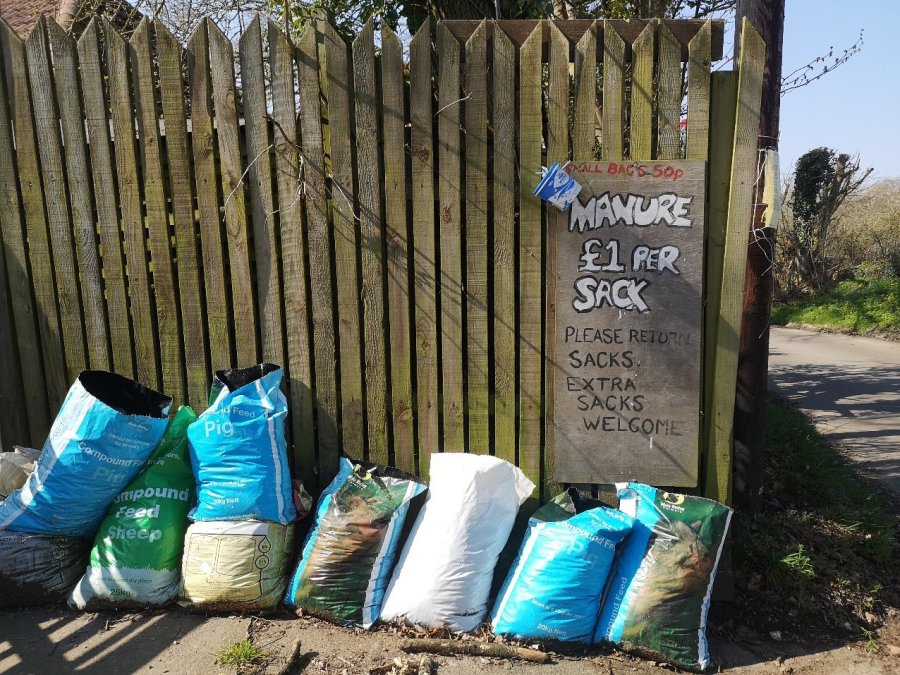

Clumps of proud daffodils with orange trumpets kept their eyes on me as I passed. There were also some plants which resembled long and upright poos, or if I am to be less disgusting, vertical pine cones in the deep grass (see above).
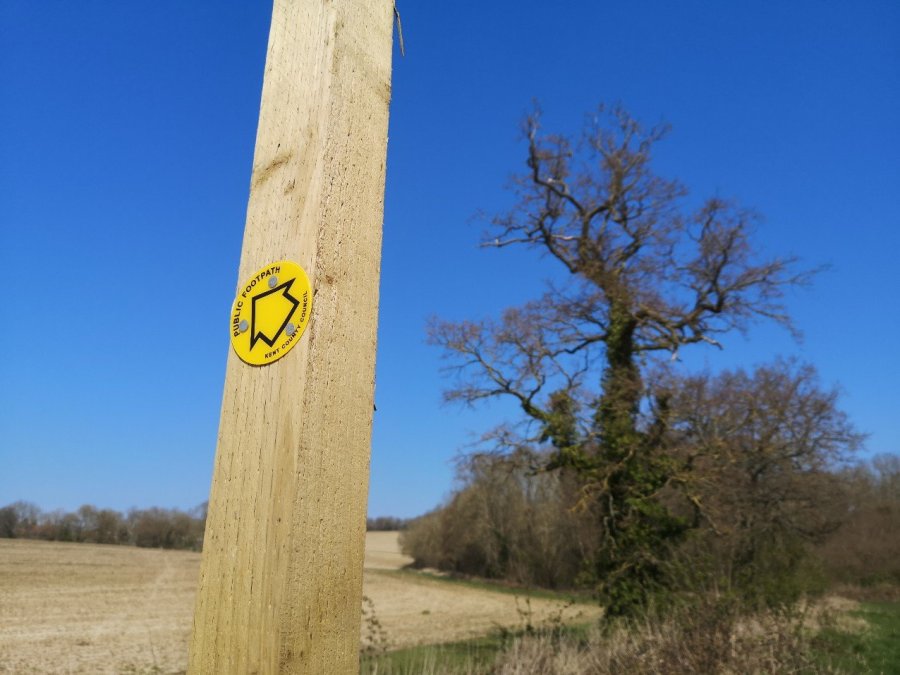
Before long there was a footpath off to the right and I started to climb quite steeply. It was peaceful. This was my exercise (in case any(official)one is reading this). There was stubble from what appeared to be bamboo on my right, but I doubt it; more likely wheat. There were mostly Magpies, Pigeons and Crows around although I did see a Jay a few days ago which was exciting. I spied a raptor nearer the top, most likely a buzzard, sailing on outstreched wings, but the photo was too indistinct to reproduce it here.

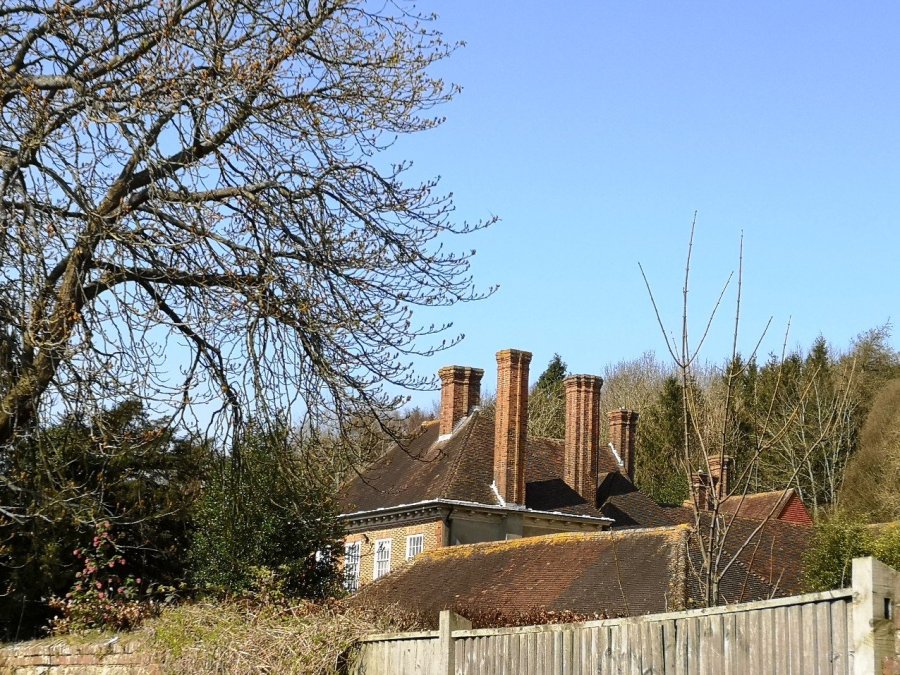
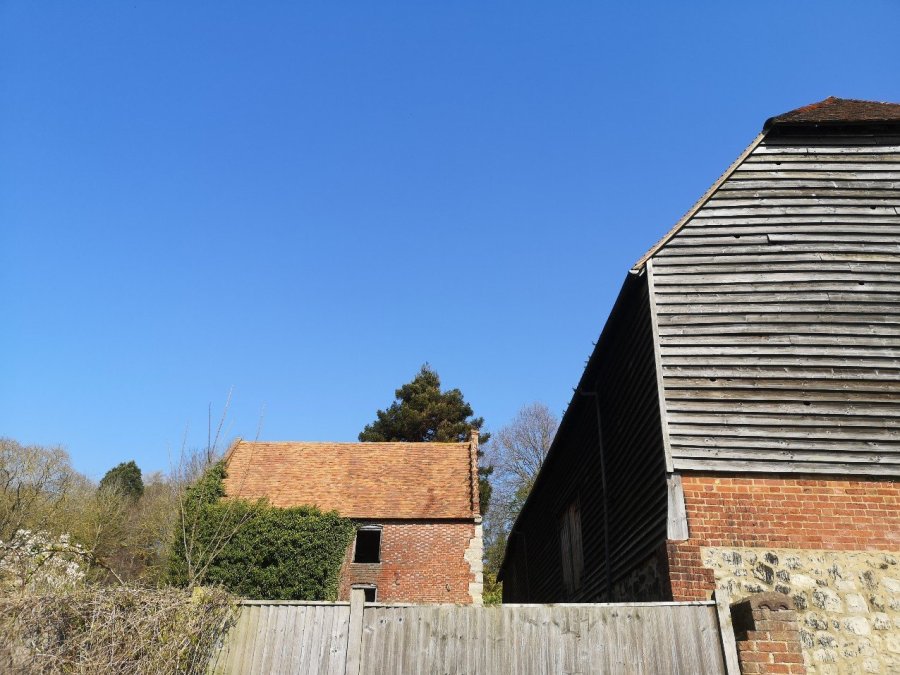

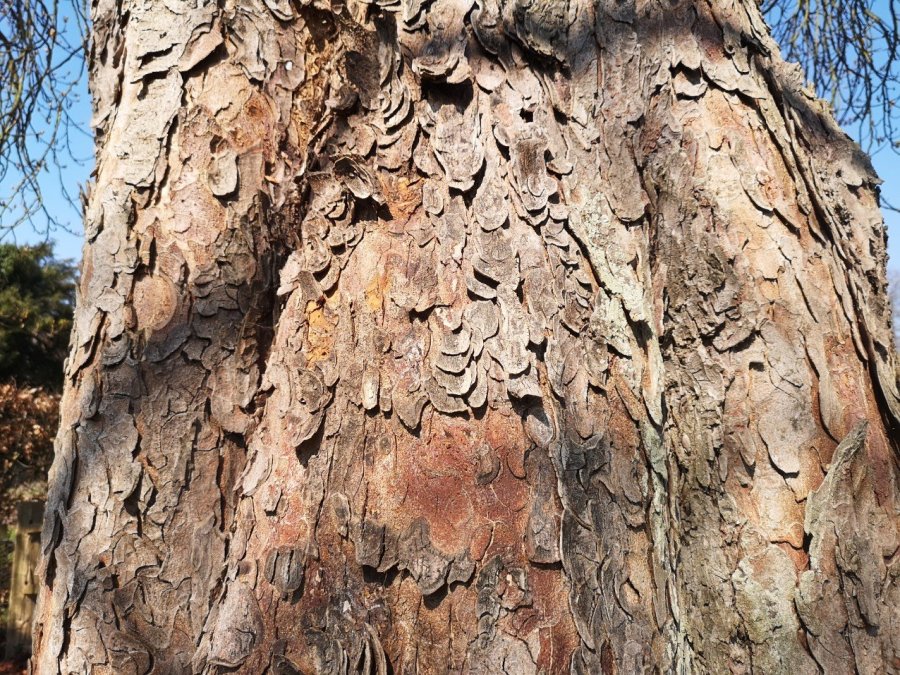
Although a dogwalker took the private road uphill on the right, I turned left on the official way and walked through the Buston Manor yard. First a jogger and then a proper walker with a staff who wore headphones, came towards me. But I was drawn aside by the gardens, architecture and tree bark design, never mind the extensive walled garden. I was told, later, that it is often used for filming TV and features.
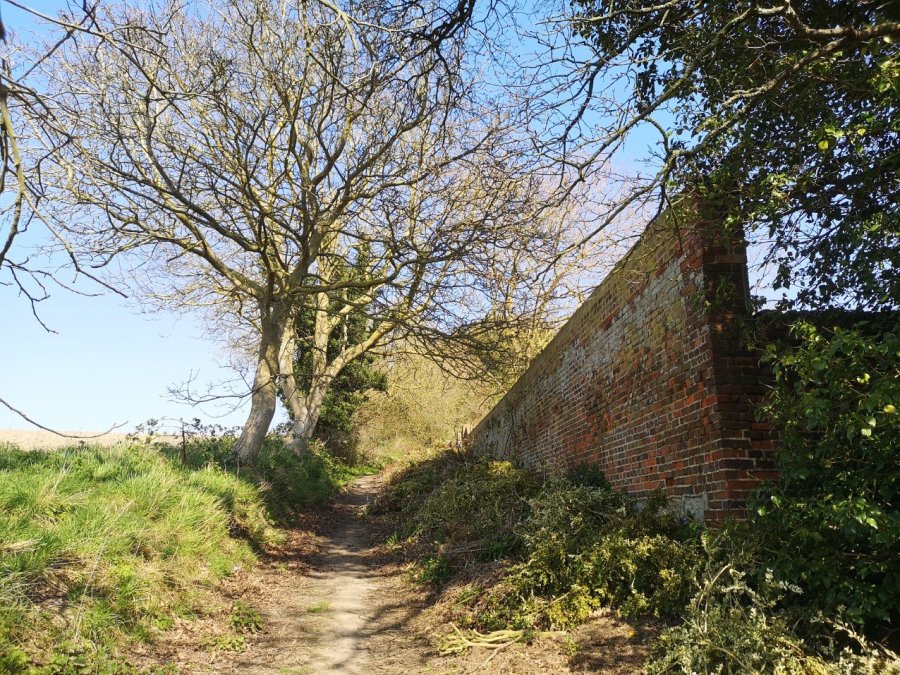
Up again and a little sit-down to eat my satsuma, wind in my ears and at the back of my neck. We have to be careful of that as an acupoint GB20, aptly named Wind Pool, where Wind can enter causing headaches or worse (flu), certainly making us vulnerable. My (and my grandmother’s) advice – wear a scarf!


Through a metal gate, I went left onto a farm track of very dark loam, ploughed by machinery wheels and criss-crossed with tree shadows and sunshine-saturated grass. Steeply down now, until I unfortunately spied a Public Footpath stone and so took a right up a slight bank and out into the open again where there was one of the ‘footpaths’ I have walked the length of before in this area. This narrow enclosure drew me along and then, suddenly ending in a field, it showed me up to the right (where admittedly the vibrant green of ground-spreading chamomile was growing alongside left-over broad bean seedlings) and, without realising where I was heading, I was through another metal gate and onto Yalding Hill.
Yalding Hill is to be avoided at all costs if you are on foot as it is a very busy, narrow road with no pavements. Being very familiar with such situations, I was brazen and made sure every vehicle speeding towards me knew I was there (waving my arms, making eye contact, thanking them afterwards), but many were going too fast and several times I had to flatten myself against a bank. Had I known this in advance, I would have turned back.
Tip: Do turn back if you find yourself on Yalding Hill. Find another, safer way down.

I walked through the garden gate three hours to the minute from when I left – good timing!
A YouTube interview with Peter Wohlleben’s best selling book – The Hidden Life of Trees
Human beings can adapt to anything.
Winnifred via elizabeth_gilbert_write on Instagram
Have you been having any thoughts about nature and the virus? Please do share them with us in the comments below – I would love to hear from you.

Very interesting and lovely views,I must just add in 1973 i worked on freeman’s farm at the top of yalding hill picking strawberries,I pushed my son in his pram ,down yalding hill to lug horse lane we’re I used to live , shows yalding was much safer on the roads,
LikeLiked by 1 person
What a lovely story, thank you very much for sharing it.
LikeLike
I love reading about your walks. Here in Iceland we are not yet limited but do avoid contact. Those strange plants you asked about are in Latin Equisetum arvense. I used to have 2 types under my washline. In Icelandic its called Claw Lightning. Wonder if its something similar in English. Used as a medicinal plant for troubles of the kidneys, urinary system. More info if you wish.
LikeLiked by 1 person
Hi Robyn, thank you so much for your comment and for the info on the plant. In English it is horse tail, but I like your Icelandic translation very much.
LikeLike